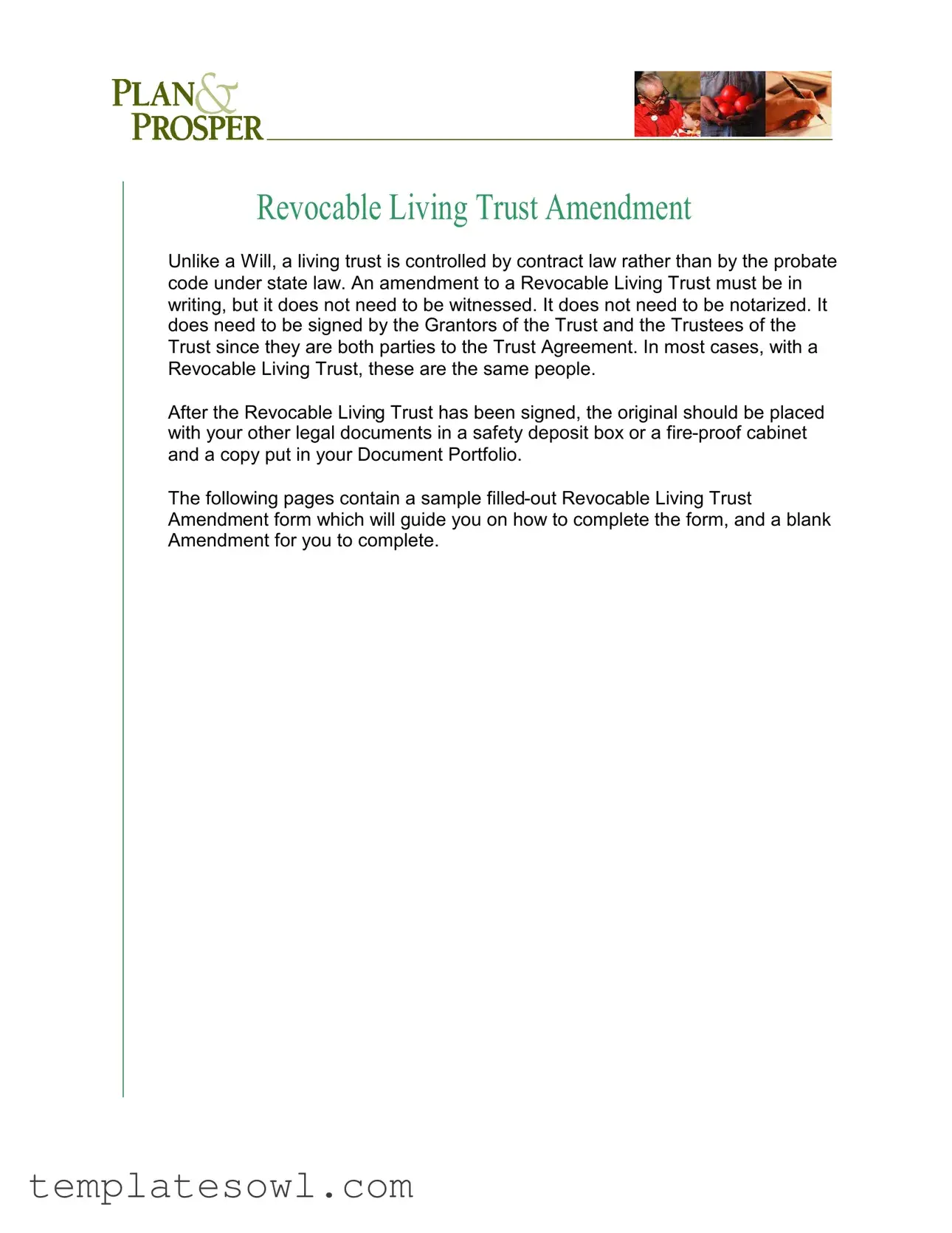What is a Trust Amendment form?
A Trust Amendment form is a legal document used to modify the terms of a Revocable Living Trust. This amendment allows the Grantor(s) to update, change, or revoke any part of the Trust Agreement without having to create an entirely new trust. The process is typically straightforward and aims to reflect the current wishes of the Grantor(s).
Who needs to sign the Trust Amendment?
The Trust Amendment must be signed by both the Grantor(s) and the Trustee(s) of the trust. Often, these roles are filled by the same individuals, simplifying the process. Their signatures indicate agreement and acknowledgment of the modification to the Trust Agreement.
Does the Trust Amendment need to be notarized or witnessed?
No, the Trust Amendment does not need to be notarized or witnessed. This differs from some other legal documents, making it easier for individuals to amend their trusts as needed. However, it’s still wise to keep the document secure and properly documented.
What should I do with the original Trust Amendment once it is signed?
Once the Trust Amendment is signed, the original document should be stored securely with other important legal documents. Options for storage include a safety deposit box or a fire-proof cabinet. It’s also advisable to keep a copy of the amendment in your Document Portfolio for easy access.
Can I make multiple amendments to my Trust?
Yes, you can make multiple amendments to your Revocable Living Trust as circumstances change or new decisions are made. Each amendment should be documented with a new Trust Amendment form, and all amendments should be kept organized to ensure clarity regarding the current terms of the trust.
Is there a specific format I must follow when creating a Trust Amendment?
While there is no formal template required by law, the Trust Amendment should clearly state that it is an amendment, reference the existing Trust Agreement, and outline the specific changes being made. It should also be signed by the Grantor(s) and Trustee(s).
How is a Trust Amendment different from a Trust Revocation?
A Trust Amendment modifies specific provisions within an existing Revocable Living Trust, while a Trust Revocation cancels the trust completely. If a trust is revoked, its assets must be distributed or managed differently in accordance with the Grantor's wishes. Understanding this distinction is important for effective estate planning.
What happens to a Trust Amendment if the Grantor becomes incapacitated?
If the Grantor becomes incapacitated, the Trust Amendment remains in effect as long as it was completed and executed properly before the incapacity occurred. The trust generally continues to operate under the terms set forth in the latest amendment. It is advisable for Grantors to create an agent or successor trustee who can manage the trust in case of incapacity.
Can I use a Trust Amendment to add or remove beneficiaries?
Yes, you can use a Trust Amendment to add or remove beneficiaries from your Trust. It's important to clearly specify any changes to the list of beneficiaries within the amendment to prevent confusion in the future.
Where can I find a sample Trust Amendment form?
Sample Trust Amendment forms are often included with online legal resources, estate planning websites, or legal aid organizations. Additionally, the Trust Amendment form you received likely contains a filled-out example and a blank version for your use, making it easier to complete your own amendments accurately.





